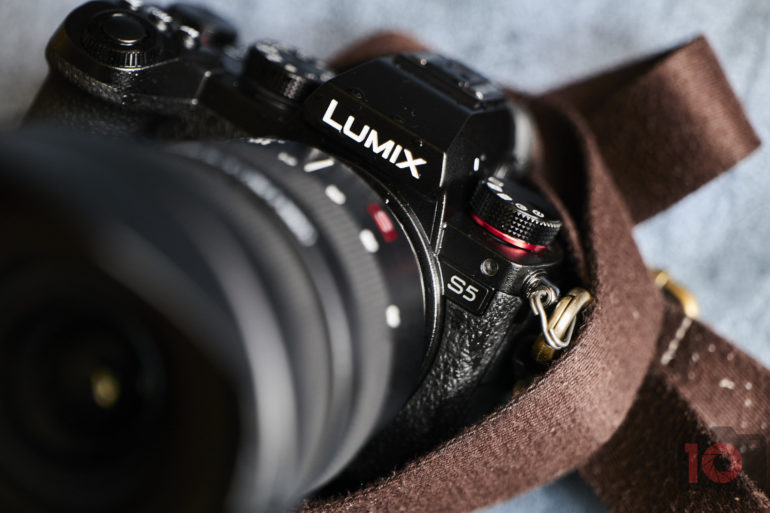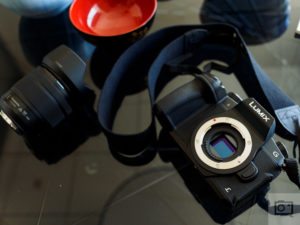
Hands-on with the new Panasonic Lumix DC-BGH1 Panasonic's Lumix DC-BGH1 is a new type of product for Panasonic: a box-style video camera that is designed to be as adaptable and flexible as possible.
It's built around an oversized Four Thirds sensor very similar to the one found in the GH5S, and the 'GH' in its name is designed to invoke that series of cameras, but the BGH1 expands far beyond those models in terms of what it can do.
The idea is that it can be connected to a wide variety of other devices, depending on your needs. The expectation isn't that anyone needs everything the camera offers, but instead that it offers a wide number of users the couple of features they need.
Video specs
The core video specifications of the BGH1 are similar to those of the GH5S, but with the added ability to capture 4K/60p footage in 10-bit quality. The 60p footage is 4:2:0, with 4:2:2 available for 4K at up to 30p.
Panasonic has also reworked the sensor's output, optimizing for noise at the base ISO steps of its two gain modes (rather than trying to offer the most consistent performance at all settings). This decision has helped lower noise and hence boost DR at those settings.
In turn, this has prompted Panasonic to expand how much of the V-Log gamma curve the camera uses. The V-Log system works by using the same curve shape, with each camera using different extents of the curve depending on how much dynamic range they can usably capture, so that the footage of any two Log-capable Panasonic cameras can be used with a single set of LUTs, when they're being processed.
So, while the BGH1 is still classified as shooting V-Log L, it's using a larger region with more DR than the GH5S does.
All the usual features
As you might expect from a camera whose name explicitly references the GH series, the BGH1 does pretty much everything the GH5S does, in video terms. This includes Variable Frame Rate mode, with 1080 capture at up to 240p and 4K at up to 60p, output at a variety of frame rates.
There's also 10-bit HLG capture and anamorphic support, with corrected previews output over HDMI or SDI. The BGH1 uses the latest improvements to Panasonic's DFD autofocus system.
The only thing missing, really, is the ability to output waveforms or vectorscope, which Panasonic says it expects to be offered (often with more precision) by many of the things you might connect the BGH1 to.
As a self-contained unit
Before we discuss how the BGH1 can be used with other equipment, it's worth pointing out that it can be used as a self-contained camera. Not the most ergonomic one, perhaps, but it has a series of customizable buttons and a control dial to mean that, other than the lack of screen, the BGH1 can be operated as a standalone device.
In its simplest form, the camera can be framed using the Lumix Connect app on a smart device, and set to record.
Internal capture
Anyone using the BGH1 as a standalone camera, or building it into a rig with an external monitor will find the inclusion of dual UHS-II SD card slots immediately valuable.
The provision of internal capture options also means it can be attached to a drone and can record onboard while in flight. But Panasonic's expectation is that only a proportion of users will ever make use of the SD card slots.
A hotshoe sounds useful
A hotshoe might seem like an odd addition to a video camera with no mechanical shutter, but its provision means it's compatible with Panasonic's DMW-XLR1 module, that provides XLR balanced audio inputs.
HDMI
As you'd expect, the BGH1 includes an HDMI socket, which is fast enough to allow a 10-bit stream of DCI 4K at up to 60p. This is the most consumer-friendly of the camera's outputs, allowing the use of external monitors and recorders while shooting.
Given Panasonic supports Raw output from S1H, we wouldn't rule out the possibility of some kind of Raw output being added.
SDI
Under one of the covers on the camera's corners is an array of SDI connectors.
The first of these connectors can be used to output a video signal. It's a 3G SDI socket so the output is limited to Full HD but can output a signal with less latency than is possible using HDMI, which is essential for audio syncing in some live environments.
The next one along is a timecode in/out socket, allowing the camera's use as part of multi-camera shoots.
But it's the third socket in the line that shows the camera's ambitions: a Genlock port that allows perfect synchronization with other devices. Whereas timecode allows multi-device sync as precise as a single frame, Genlock allows even finer precision, for applications such as 3D, VR and volumetric capture, where multiple perspectives need to line-up exactly, in order to work.
Ethernet
Another way of using the camera is via its Ethernet connection. The BGH1 supports power over Ethernet, in addition to video transmission and camera control signals, allowing it to run without a battery or plug-in power. Additionally, up to 12 cameras can be operated remotely from the Lumix Tether app, which provides a complete array of camera controls.
Panasonic says that it's working on firmware that will allow the streaming of video using the RTMP system over Ethernet, meaning the camera can be sent to an interviewee, configured remotely and then stream back to the studio using a low-latency RTMP connection.
Panasonic says it will release an SDK to allow users to develop their own software to fully control the camera, though it only refers to USB control, since the same SDK will also cover many of the company's existing cameras.
The BGH1 will be able to output over HDMI, SDI and USB simultaneously, if you so require it.
Batteries
If you're not using Ethernet or the camera's 12V DC input (shown above) to power the camera, the BGH1 can use Panasonic's large VW-VB video camera batteries.
These are available in capacities of 43, 65 and 86 Wh (7. 28V 11,800 mAh), which will provide battery life way beyond anything we're used to in the stills sphere. For reference, a Sony NP-FZ100, which is one of the most powerful batteries we usually encounter, is rated at 16. 4Wh.
Weight
In order to allow drone use, the BGH1 has been designed to be as light as possible. Rather than the 730g of the stabilized GH5, the BGH1 weighs just 545g without a battery.
The use of 7. 2V batteries allowed a higher voltage, lower current design, which reduces heat built-up, and the camera also features a fan much like the one in Panasonic's full-frame S1H, since this adds less weight than adding additional metal to act as a heatsink.
Conclusion
The Panasonic Lumix DC-BGH1 doesn't look like most of the cameras we review and its sheer flexibility, as much as its physical shape, makes it a little hard to get a handle on. To a degree, it feels like Panasonic hasn't so much tried to design a camera to do a particular job, they've tried to design a camera that can lend itself to a vast range of different jobs, probably beyond the expectations of the company itself.
To an extent, we won't know what the BGH1 is really for until videographers and production companies start using it and pushing to explore its potential.
. dpreview.com2020-10-14 17:00








